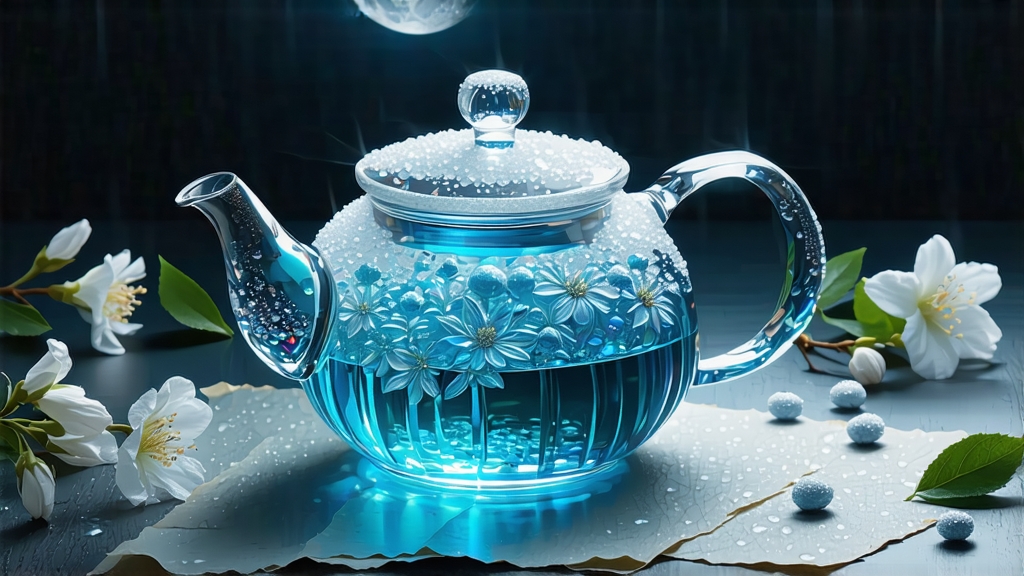
White tea is the quietest child in the Chinese tea family, and among its whispered siblings, White Hair Silver Needle (Bai Hao Yin Zhen) is the most luminous. To international drinkers who equate “white” with colorless insipidity, the name may sound timid; yet one encounter with its silvery tassels and nectar-sweet liquor proves that restraint can be the ultimate flamboyance. This essay invites you to travel from the coastal hills of Fujian to your own porcelain cup, tracing the history, craft, and sensual grammar of a tea once reserved for emperors and now gently conquering the world one down-covered bud at a time.
-
Historical echoes
Song-dynasty emperor Huizong (1082–1135) wrote in his Treatise on Tea that “white is the supreme color among teas,” praising the pale cakes submitted as tribute from Fujian. Those cakes were not today’s Silver Needle, but the imperial fascination with pale, unoxidized leaf set the stage. The exact birth date of Yin Zhen is debated; local chronicles first mention “silver-tip tribute” in the late 1700s, when tea makers in Fuding and Zhenghe counties began selecting only the unopened buds of the Da Bai (Big White) cultivar, withering them without any heat, and presenting the downy needles to the court. Because the buds resemble frost-coated embroidery needles, the name stuck. Export followed in the nineteenth century via Amoy (Xiamen) port, where European merchants mistook the white hairs for mold yet still praised the honeyed infusion. After a mid-twentieth-century lull, Silver Needle re-emerged in the 1990s as Chinese tea scholars rediscovered its high theanine content and subtle oxidation chemistry, propelling it onto specialty menus from Brooklyn to Berlin. -
Terroir and cultivar
Authentic Silver Needle is inseparable from two micro-regions in northern Fujian. Fuding, washed by East China Sea mists, offers red granitic soils and a maritime climate that nurtures the Da Bai Hao bush: fat, fast-growing buds sheathed in pearl-white trichomes. Zhenghe, slightly inland and 300 m higher, owns cooler nights and yellow-clay hills that favor the slower-maturing Da Bai cultivar, yielding slimmer needles with more greenish silver and a stony minerality. Purists debate which terroir is nobler; cup both side-by-side and you will taste oceanic cream in Fuding versus alpine flint in Zhenghe. Global gardens from Assam to Kenya now imitate the style, but only leaf born in these two counties may legally wear the “Bai Hao Yin Zhen” label under China’s geographical-indication system. -
The craft of “doing nothing”
Making Silver Needle looks like inaction, yet it is a choreography of climate reading and fingertip restraint. Picking begins in mid-March when the bud reaches 2.5–3 cm but before the first leaf unfurls. Workers pluck at dawn while dew still guards the trichomes from bruising; gloves are mandatory because skin oils darken the down. The buds are then spread on bamboo trays exactly 3 cm thick and placed in a sun-warmed, north-ventilated pavilion. For 36–48 hours they wither under natural convection, losing 80 % moisture while enzymatic oxidation hovers at 5–10 %—too little to create black tea’s tannins, enough to mellow grassy edges. No pan-firing, no rolling, no kneading: only the whisper of air and the occasional turn by a cedar stick. Finally, the needles are dried at 40 °C for twenty minutes, just enough to lock in 5 % residual moisture and preserve the fuzzy coat. The entire process is a dialogue between tea maker and weather; one sudden shower can send trays indoors, extending withering and adding cocoa nuance. Thus each harvest is an unrepeatable vintage. -
Leaf anatomy and grading
Premium Silver Needle should be needle-straight, 2.5–3.2 cm long, uniformly ivory with a silvery flash under light. Rub a bud between fingers: the down should feel like powdered sugar, not greasy. Broken tips, black spots, or green stems downgrade the lot to “second needle” or “white peony grade,” sold at